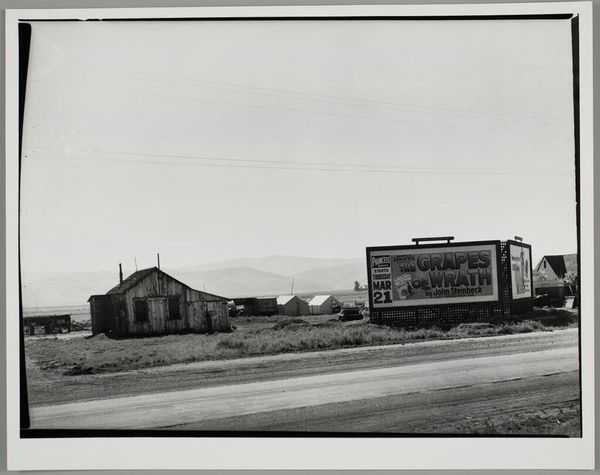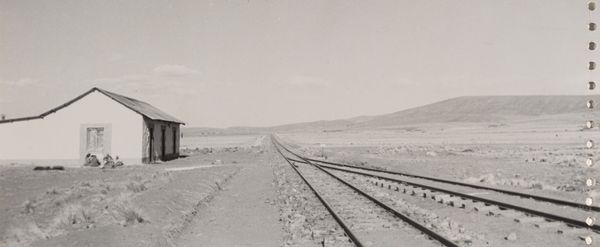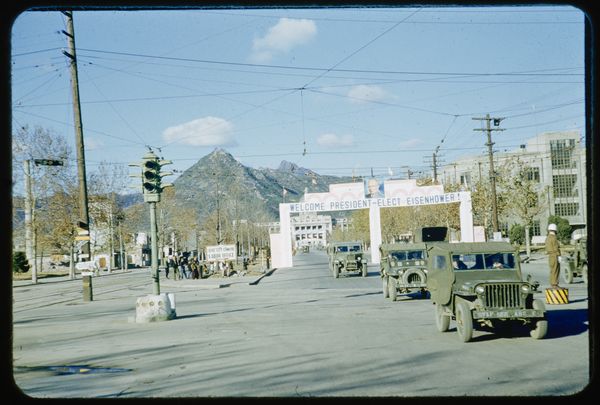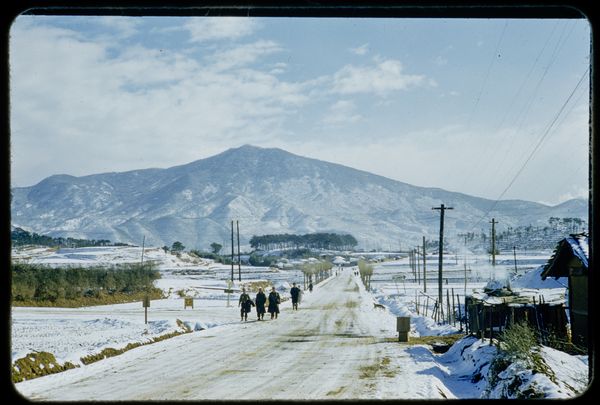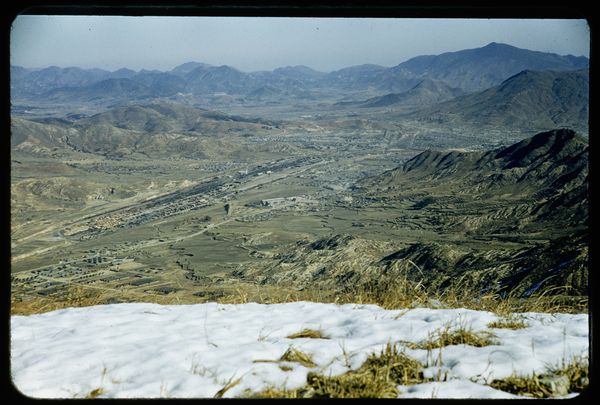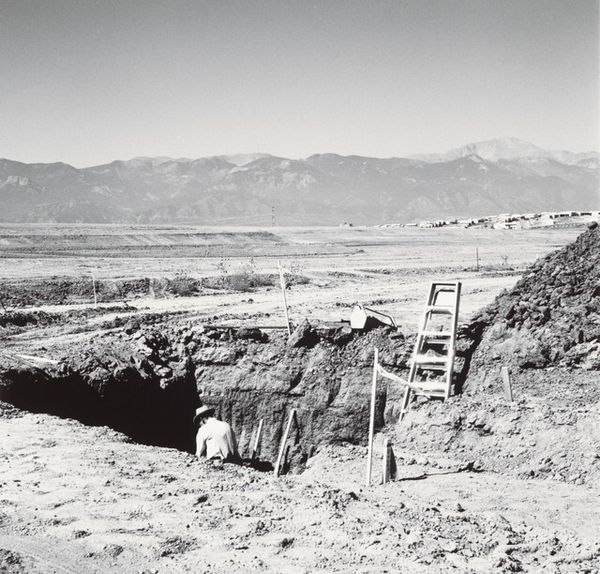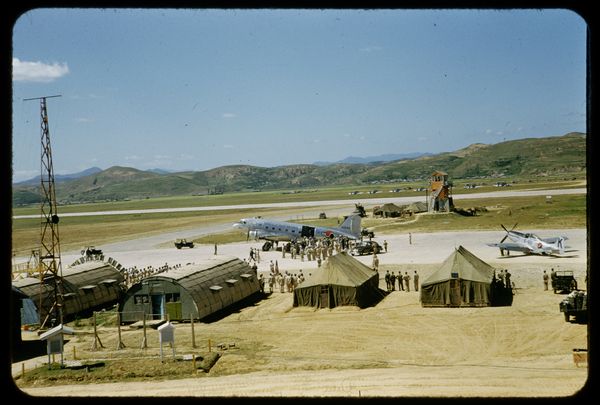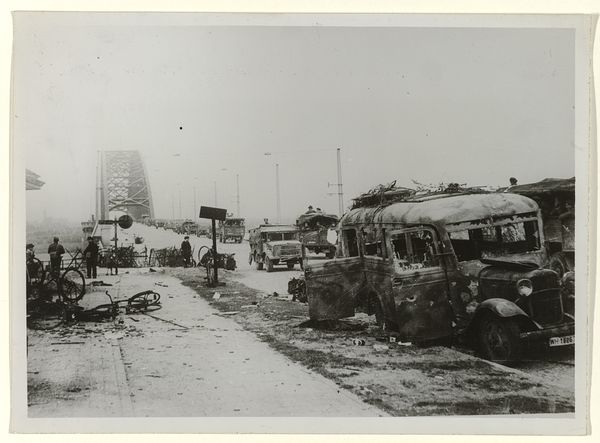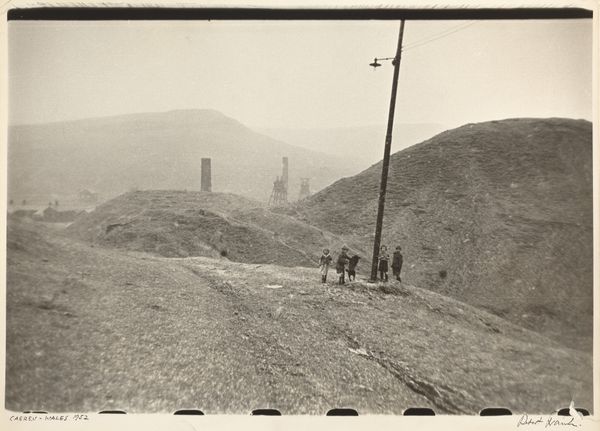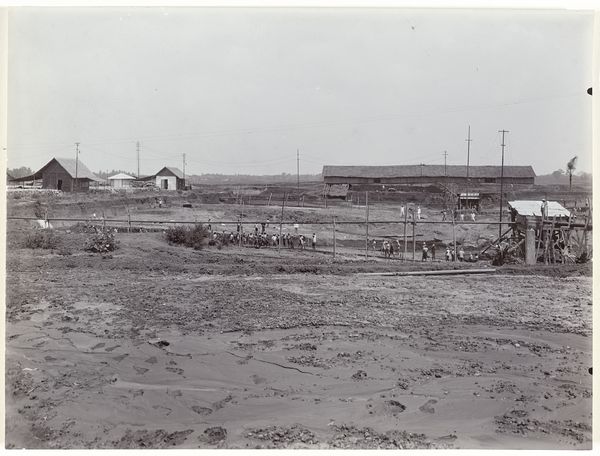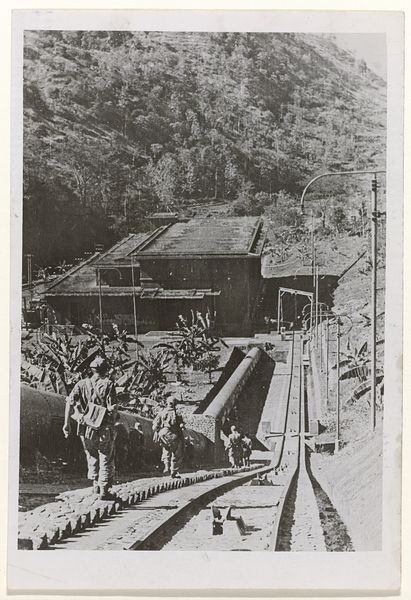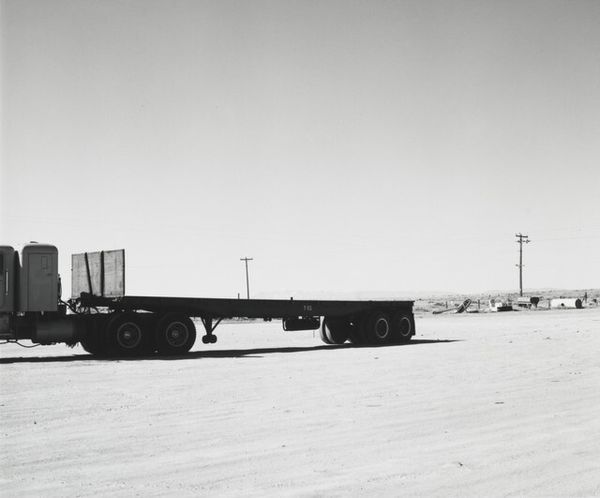
photography
#
urban landscape
#
landscape
#
photography
#
cityscape
#
modernism
Dimensions: height 5 cm, width 5 cm
Copyright: Rijks Museum: Open Domain
Curator: This compelling photograph by David Ketel, "Fabricage van asfalt," was taken between 1951 and 1953. It's part of the Rijksmuseum collection, a truly fascinating urban landscape rendered through photography. Editor: The immediate feeling is desolation, yet also a strange sort of stark beauty. The mountains loom in the background, juxtaposed with the harsh reality of this industrial site. What do you make of the overall composition? Curator: What strikes me is the tension it sets up. The photo presents a portrait of post-war industrialization, likely in Korea considering the company named on the sign in the foreground. It makes you consider issues of urban development and how communities rebuilt themselves in the face of massive societal upheaval, both physically and ideologically. It points towards modernization efforts, probably funded in part through US Aid in that era, reflecting American ambitions during the cold war. Editor: I'm drawn to that very sign – "Little Pittsburgh Asphalt Hot Mix Plant". Pittsburgh is a powerful symbol itself, instantly evoking associations with industrial might, hard labor, and perhaps also environmental degradation. Its presence here acts as a cultural anchor, transferring that complex legacy. Even those unassuming looking workers bundled in rough dark cloth evoke some deep feelings and associations in me, perhaps they’re stand-ins for our complex relationship with industry. Curator: Precisely. And what about the role of the photographer, Ketel? Is he an objective observer, or is he implicitly commenting on the human cost of progress? I suspect his lens captured something of both the aspiration and the toll that relentless progress exerts. It forces us to confront our past and question what price has been paid for today's conveniences and technologies. What were the gender dynamics? What type of exploitation are we overlooking if we focus too heavily on its visual presentation? Editor: I find that contrast absolutely vital—the stark machinery alongside these faceless, shrouded workers creates a kind of monument, whether intended or not, that urges the viewer towards serious pondering and meditation. What at first feels bland morphs into a layered image. Curator: Ultimately, Ketel's "Fabricage van asfalt" provokes a broader discussion on the societal consequences of urban landscapes—both then and now—and encourages critical reflection of issues relevant still. Editor: It reveals our perpetual yearning to rebuild and redefine ourselves in the face of loss, destruction, and despair. A powerful work on cultural resilience indeed.
Comments
No comments
Be the first to comment and join the conversation on the ultimate creative platform.


